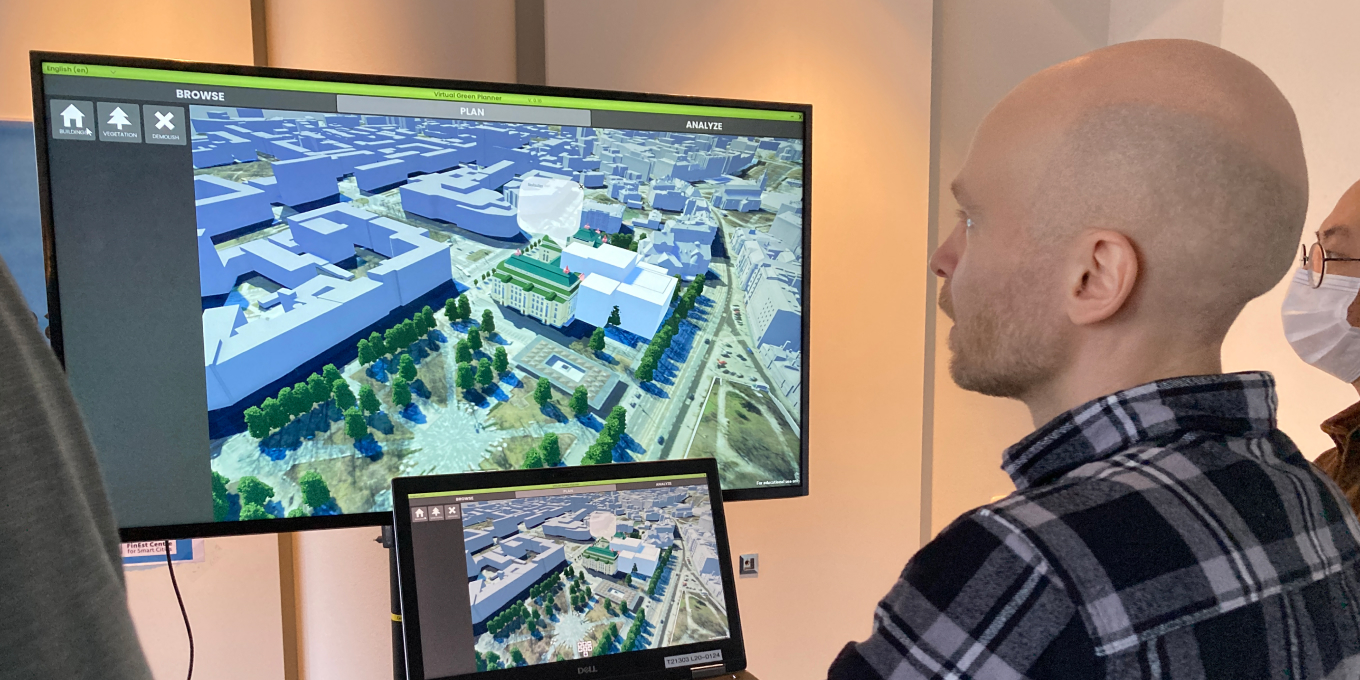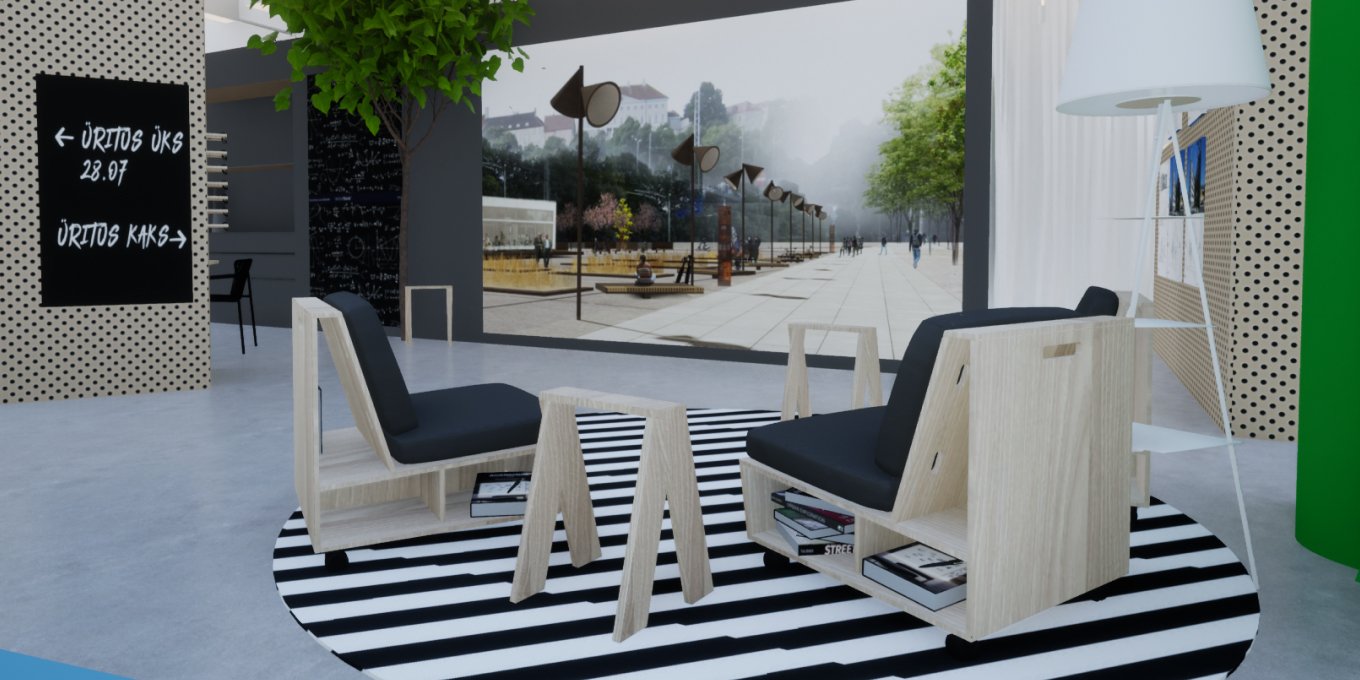Connecting built environment, vegetation and people by using urban digital twins.
The aim of the GreenTwins project was twofold:
- to create and visualize through user-friendly interfaces the layer of dynamic digital vegetation for the Urban Digital Twins of Helsinki and Tallinn;
- to create user-friendly physical and virtual spaces for digitally aided public participation and collaboration.
Thus, GreenTwins aimed to bring forward the importance of urban vegetation for the well-being of citizens, to forecast and visualize the temporal and seasonal changes in urban vegetation, as well as to involve citizens into designing urban green areas.
The outcomes of the GreenTwins project are:
Digital tools: Virtual Green Planner (VGP) and Urban Tempo (UT)
VGP is a Unity game-engine based 3D application for co-designing built and green areas. It is primarily meant as a tool for active citizens to create alternative urban visions and discuss them. UT is a COVISE based 3D augmented reality application for realistic visualisations of built and green areas. It is meant as a tool for professionals and active citizens to view the temporal and seasonal changes in the urban vegetation.







